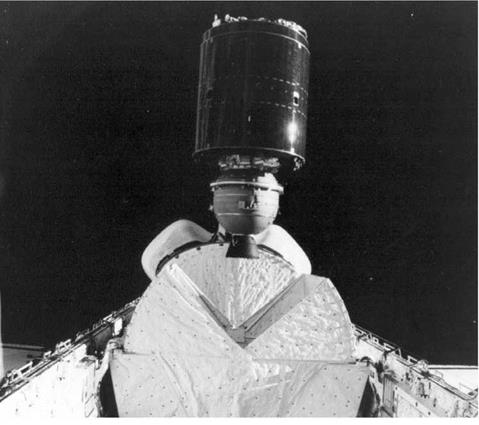STS-5
|
Int. Designation |
1982-110A |
|
Launched |
11 November 1982 |
|
Launch Site |
Pad 39A, Kennedy Space Center, Florida |
|
Landed |
16 November 1982 |
|
Landing Site |
Runway 22, Edwards Air Force Base, California |
|
Launch Vehicle |
OV-102 Columbia/ET-6/SRB A15; A16/SSME #1 2007; #2 2006; #3 2005 |
|
Duration |
5 days 2 hrs 14 min 26 sec |
|
Callsign |
Columbia |
|
Objective |
First “operational” Shuttle mission – commercial satellite deployment mission |
Flight Crew
BRAND, Vance DeVoe, 51, civilian, commander, 2nd mission Previous mission: Apollo 18 ASTP (1975)
OVERMYER, Robert Franklyn, 46, USMC, pilot ALLEN, Joseph Percival, 45, civilian, mission specialist 1 LENOIR, William Benjamin, 43, civilian, mission specialist 2
Flight Log
The news of the death of Soviet premier Leonid Brezhnev, events in Poland, and a British spy scandal served to overshadow this unique space flight, which began at 07: 19hrs local time at the Kennedy Space Center. Commander Vance Brand, pilot Bob Overmyer and mission specialist Bill Lenoir (evaluating the MS2/Flight Engineer role for ascent), were seated in the flight deck, while the other mission specialist, Joe Allen, was seated below in the mid-deck, which also served as the kitchen and toilet. Columbia was still fitted with ejection seats for the commander and pilot but they were not armed. The crew was the first from America not to have any means of escape in the event of a launch accident and were also the first to fly in flight overalls, and oxygen – fed helmets, in case of cabin depressurisation.
After MECO and two OMS burns, Columbia was in its 256 km (159 miles) maximum altitude 28.4° inclination orbit. At T + 7 hours 58 minutes 35 seconds into the mission, the crew dispatched the communications satellite SBS from its spin table in the payload bay, on the first commercial manned trucking mission, earning for NASA a cool $12 million. The satellite’s own Pam D upper stage fired later, to place it into a geostationary transfer orbit where it would normally have been placed by a conventional expendable launch vehicle. Another satellite, Canada’s Anik 3, was launched later and the crew proudly displayed an “Ace Trucking Company – We Deliver’’ sign to TV cameras.
|
One of the commercial satellite deployment operations during STS-5 |
There were disappointments, however. First Overmyer was space sick, vomiting at T + 6 hours and continuing to feel queasy. Lenoir felt less sick, describing his symptoms as a “wet belch”. The astronauts were prescribed drugs and were also angry that their illness was publicised, possibly to the detriment of their careers. In future, NASA decided, if an astronaut was sick it would remain a confidential matter. The first Shuttle spacewalk by Allen and Lenoir was delayed by a day, and then never took place at all because both astronauts experienced spacesuit problems on the brink of opening the airlock door. Lenoir’s primary oxygen pressure regulator failed and Allen’s fan assembly sounded like a motorboat. Allen, now seated in the flight deck (evaluating the FE role for entry), took pictures during re-entry, which was like being inside a blast furnace, he said.
Columbia was aiming for a lake bed landing at Edwards Air Force Base but was diverted to the concrete runway 22 because the “dry” lake was rather wet. Main gear touchdown came at T + 5 days 2 hours 14 minutes 26 seconds, the longest four-crew space flight.
Milestones
88th manned space flight
36th US manned space flight
5th Shuttle flight
5th flight of Columbia
1st flight with four crew members
1st flight of mission specialists
1st manned space flight to deploy commercial satellites
1st flight with cancelled EVA operations
1st launch and landing by crew member not seated in cockpit
1st US flight with no emergency crew escape
1st US flight by crew without spacesuits
1st US flight to carry engineers











